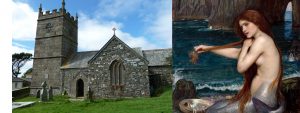Let’s take a step backwards to around 1831 in Britain when a creeping, deadly disease knocked on the doors of people of Britain. It took its victims one by one and rapidly spread, killing approximately a total of 7000 people between 1831 and 1832. Nobody knew how the disease started or what the disease was, all people knew were the symptoms and the masses of bodies that needed to be buried. The recognised symptoms were: severe diarrhea which increased and became accompanied by painful gut cramps, extreme thirst and dehydration; sever pain in the limbs, stomach, and abdominal muscles; a change skin colour which left bodies bluish-grey.
Twenty three years later after four more outbreaks, a much larger epidemic broke out in London which spread in areas of, Soho, St. Ann’s, Southwark and Lambeth then on to Broad Street and Golden-square, where 500 people died in the space of three months. It was the worst that Britain had seen of Cholera. Life was a dreaded nightmare, people fled their homes and the streets and houses were filled with the stifling smells of the dead and the odors of the disease. It was Dr Snow who recognized and confirmed that the disease Cholera was spread from contamination of water when he noticed that most of the victims that had died all had drunk the water from the Broad Street pump. In Poland Street workhouse (which was near the Broad Street Pump) only five of the inmates caught the disease and the rest of the 70 inmates survived. Dr Snow proved that the reason for this was that they had all been drinking the free beer that was an allowance given to them everyday and never touched the water from the pump.He persuaded the local officials to remove the handle from the pump to stop any one else drinking the water. Once the handle had been removed the Cholera came to a stop. Although Dr Snow had linked his findings and proved his theories so far, this was still not enough evidence to convince the Board of Health which took the view that they had no reason to believe and adopt Dr Snow’s theories.
The Reverend of St Luke’s church, Henry Whitehead took out his own research and came up with the same conclusions as Dr Snow. The two paired together in recognizing not only how the disease had spread but recognized the bacterial causes of the disease from the polluted sewage areas from the Thames that was fed through to the cesspools and wells where people drunk from. Henry Whitehead published several reports proving the research that they had found and the evidence, but no drastic action was taken.
Henry Whitehead remained at St Luke’s until 1857 when he left and went on to another curacy. This was not to last as fate had its way of bringing Henry Whitehead back on the case of Cholera many years later after the death of Dr Snow who died in 1858. Another outbreak of Cholera attacked east London slums in 1865 where the bacterial disease had leaked into the overcrowded sewers and into the homes of people taking many more lives. This time more people began to listen to Henry Whitehead and he was one of the volunteers who were called to help with the epidemic in the east end.
Dr Snow once said to the Rev Henry Whitehead
“You and I may not live to see the day, and my name maybe forgotten when it comes, but the time will arrive when great outbreaks of cholera will be things of the past; and it is the knowledge of the way in which the disease is propagated which will cause them to disappear.”






